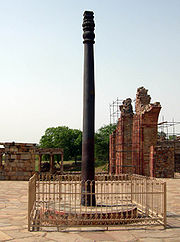INDIA... Different Faces
India a country with different faces. It is a budle of contradictions. Just like from the 'Tale of Two Cities' of Charles Dickins "There is absolute poverty and There is absolute prosperity... There are Multiplexes.. There are Slums ..." Here we provide some key statistical facts of India and how it stands in the race of Millenium Development Goals.
Some Key Facts About India |
|||
| 1 | Population |
: |
1.1 billion (2008 projected population) |
| 2 | Average life expectancy |
: |
64 years |
| 3 | Average per capita income |
: |
US$2,740 |
| 4 | Gross national income (GNI) |
: |
US$3,078 billion |
| 5 | Average annual growth rate |
: |
9% |
| 6 | Women dying in childbirth |
: |
450 per 100,000 live births(World Health Organisation, 2005) |
| 7 | Children dying before age 5 |
: |
74 per 1,000 live births (National Family Health Survey (NFHS), |
| 8 | Percentage of children receiving primary school education |
: |
86% (WDI, 2006) |
| 9 | Percentage of people aged 15-49 living with HIV/AIDS |
: |
0.3% (NFHS, 2005-06) |
| 10 | Percentage of people with access to safe, clean water |
: |
88% (NFHS, 2005-06) |
| 11 | Percentage of people not meeting daily food needs |
: |
27.5% |
The above facts are definetly alarming. They are in no way in comparison with developed countries and no way much better than least developed african countries. The Three Faces of India are presented below:
Poorest India :
More than 456 million people of India are poor taking the international standards. They have no access to the basic necessities of life. They don't have enough resources to feed their children.Developing India :
In India 400 million people are just above the poverty line and they are vulnerable to any sort of crisis. It is this sector that gets hurt the most due to price fluctuations. They cut on their calories to buffer the price fluctuations.Global India :
India has a very major role to play in the world scenario. For example the generic drugs roduced by which are quiet cheap compared to that of developed countries can save millions of lives of under developed countries. Steps taken by India to mitigate climate change, how to run the development sustaiably and how to save environment can guide the other developing countries.
Millenium Development goals- Progress
The progress of India towards Millenium Development goals(MDG) is given here in brief.
-
MDG 1: Eradicate extreme poverty and hunger
The proportion of people living below the international poverty line has been decreasing, but not fast enough to meet this MDG target. And even meeting the target would still leave around 250 million in poverty in 2015. MDG 2: Achieve universal primary education
India is likely to meet the primary education targets as there has been a big rise in enrolment of primary school children. The focus is now on improving the poor quality of the education they are getting.MDG 3: Promote gender equality and empower women
Girls’ enrolment in school is growing faster than boys’, but a significant gender gap remains at the secondary level. Only 8.3% of seats in the Indian Parliament are held by women.MDG 4: Reduce child mortality
The percentage of children under 3 who are underweight has fallen but remains very high at 40%. Accelerated efforts to reduce infant deaths will be required to meet this goal.MDG 5: Improve maternal health
India is failing to achieve the target to reduce the number of deaths among women before, during and shortly after childbirth. Currently only 48% of births are attended by skilled attendants.MDG 6: Combat HIV/AIDS, malaria and other diseases
Relatively good progress is being made in controlling communicable diseases. Polio is close to eradication, India is on track to achieve the TB MDG and HIV/AIDS infection has been kept below a rate of 0.5%.
Further to this, we have been encouraging better co-ordination among donors and more effective leadership by the government in the prevention of HIV/AIDS.MDG 7: Ensure environmental sustainability
India is showing mixed progress on environmental, water and sanitation targets. Only 33% of the population has access to improved sanitation, and India is the fourth largest emitter of greenhouse gases.MDG 8: Develop a global partnership for development
One element of this MDG is access to communications technology. From 2000 to 2006, according to the UN, the number of people in India with a mobile phone subscription rose dramatically from 0.35 per 100 to 14.83.







